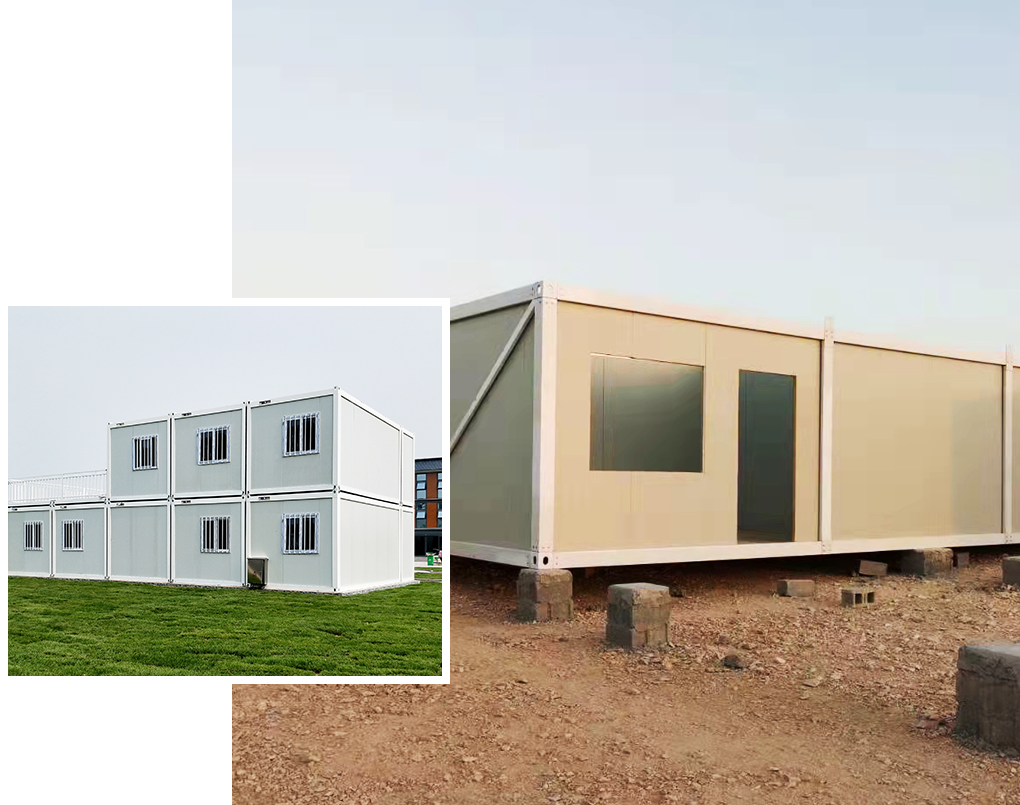Foldable Container House: Creating Flexible Space
When it comes to the construction of traditional houses, the application of reinforced concrete is indispensable, and it usually takes several months or even longer to complete. However, there is now a type o container house (foldable) on the market that can be erected without a single brick or tile and is very easy to install. These foldable container houses are used in construction sites, temporary offices, field camps, tourist attractions, various makeshift hospitals, emergency support projects, and other fields. The main advantage of ZhongTai's container house (foldable) is its overall mobility, which is why it is so popular among many outdoor operations or construction units. Before its advent, many outdoor units used tents for outdoor accommodation or office purposes, which were damp and had poor insulation, not to mention soundproofing. The outdoor working environment is inherently harsh, and if the living or working conditions are subpar, the motivation and efficiency of outdoor construction workers are greatly reduced.
Advantages of Foldable Container Houses
High Flexibility: The foldable container house can be customized according to actual needs, including size, layout, color, etc., to meet the requirements of different scenarios. Its foldable feature allows the house to easily adjust its space size to adapt to various terrains and environments.
Strong Convenience: After the house is prefabricated in the factory, it can be quickly assembled and disassembled on-site, greatly shortening the construction period. In addition, its lightweight materials and foldable design make transportation and installation more convenient.
Good Economic Efficiency: Compared to traditional buildings, foldable container houses have lower construction costs and shorter construction cycles. At the same time, its reusability reduces long-term usage costs.
Environmental Protection and Energy Saving: The house is made of environmentally friendly materials, which reduces the generation of construction waste. Its excellent thermal insulation performance also helps to save energy and reduce emissions, lowering energy consumption.
Installation Precautions for Foldable Container Houses
Select an Appropriate Site: The foldable container house should be placed on a flat and solid ground to avoid tilting or collapsing during use. The bearing capacity of the ground should be able to support the weight of the foldable container.
Check the Integrity of the Container: Inspect the container before installation to ensure its structure is intact and free from damage or deformation. If damage or deformation is found, it should be repaired or replaced in a timely manner.
Follow the Installation Manual: Install correctly according to the installation manual provided by the prefab container homes manufacturer. Pay attention to the firmness and stability of each component during installation.
Ensure Safety: Pay attention to safe operations during installation to prevent accidents. Non-professionals should not operate lifting equipment and installation tools arbitrarily. Set up warning signs and isolated areas around the installation area to prevent unauthorized personnel from entering.
Waterproof and Dustproof: Foldable container houses are prone to water and dust erosion during use, so attention should be paid to waterproofing and dustproofing. A layer of waterproof coating can be applied to the bottom and the surroundings of the container and checked and maintained regularly.
Reasonably Arrange Loading and Stacking: Reasonable arrangement of loading and stacking inside the container house is necessary to avoid weight imbalance or unstable stacking. Also, be mindful of the nature and characteristics of the goods to avoid corrosion or damage to the interior of the container.
 English
English  français
français  Deutsch
Deutsch  Español
Español  русский
русский  العربية
العربية  tiếng việt
tiếng việt  Indonesia
Indonesia  Latinae
Latinae 



